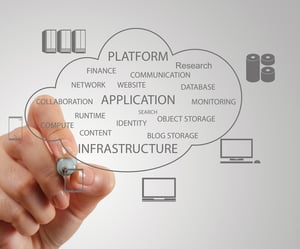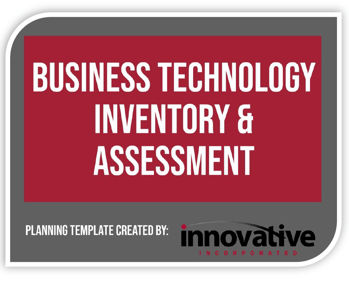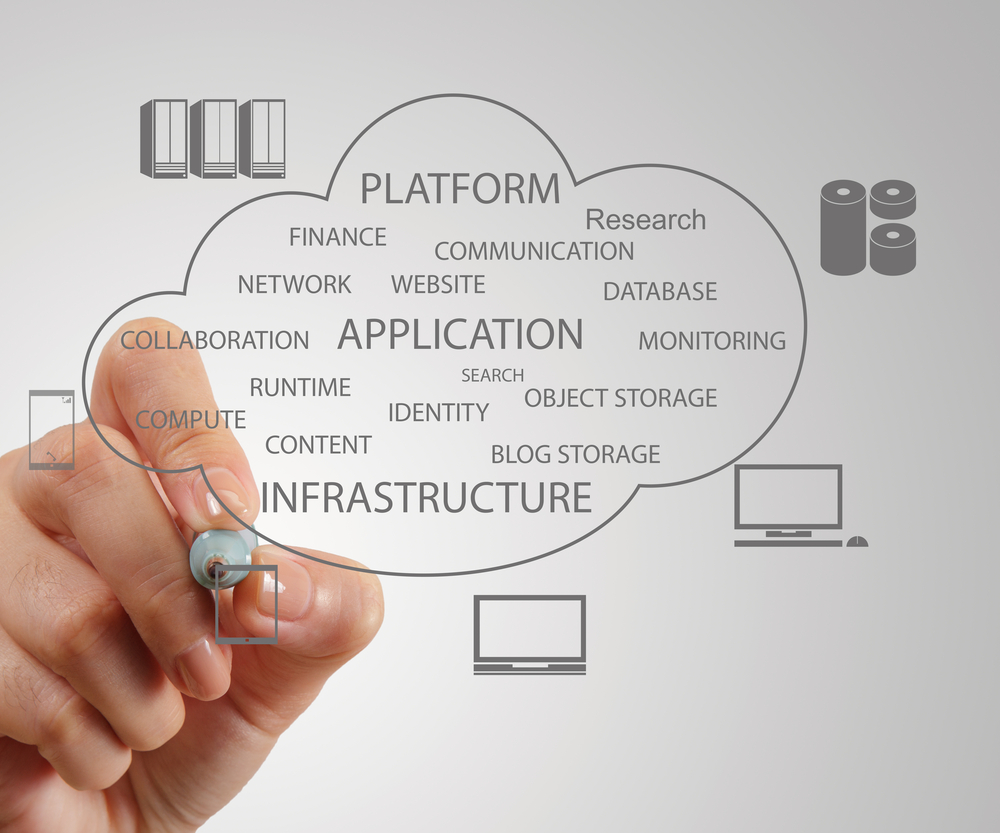What to Include in your Strategic Technology Plan
Computers, Printers, Copiers, Phone Systems Oh My!
You know your business depends on technology for day-to-day operations, but do you know the impact it has on things like employee retention, customer experience, and overall growth potential?
Do you know how much you stand to lose if your technology systems fail – or worse yet – would your business even survive a major outage for any length of time?
Technology is a major factor in your ability to grow your business and must be planned for strategically.
Fixing computers when they break is not an IT strategy
Fixing is reactive  and doesn’t allow you to proactively plan for your technology investments. A more strategic approach helps to ensure you’re making investments in technology that contribute to the success of your business.
and doesn’t allow you to proactively plan for your technology investments. A more strategic approach helps to ensure you’re making investments in technology that contribute to the success of your business.
- Technology, like any tool, is only as good as its fit for the job. Fixing your chainsaw isn’t the best investment if what you really need is a nail gun. A sound IT strategy helps to determine when changes in your business and/or job functions dictate changes in your IT tools.
- Fixing only allows you to maintain the status quo. Is your business the same as it was three years ago when you purchased that sluggish computer? If not, your investment may be better spent on new equipment better aligned with your business needs today and not three years ago.
- Fixing doesn’t allow for lifecycle management. With an average lifespan of 3-5 years, computers and servers should be replaced as they approach end-of-life. A comprehensive IT strategy will track anticipated replacement dates and assist you in making educated decisions on investing in repair vs. replacement.
A comprehensive IT strategy includes everything, even the kitchen sink.
Maybe not the kitchen sink itself – but potentially an overflow sensor. Every device that connects to your network should be both tactically and strategically addressed in your IT strategic plan.
Your plan should address these questions:
What devices connect to the network and what is their life expectancy?
 This includes the obvious devices like computers, servers, and printers; but should also include your firewalls, routers, switches, phone, and security systems. Internet of Things (IoT) devices like a wi-fi enabled hot water heater or smart fridge should also be identified, as these items can sometimes introduce network security risks that you’ll want to address in your security and compliance plans. In addition to a basic list of devices, your inventory should include the purchase date, anticipated end of life date, as well as any warranty and support agreements.
This includes the obvious devices like computers, servers, and printers; but should also include your firewalls, routers, switches, phone, and security systems. Internet of Things (IoT) devices like a wi-fi enabled hot water heater or smart fridge should also be identified, as these items can sometimes introduce network security risks that you’ll want to address in your security and compliance plans. In addition to a basic list of devices, your inventory should include the purchase date, anticipated end of life date, as well as any warranty and support agreements.
How does the business use each device, and what happens when it’s not working?
Computers, for example, may be critical to your business every single day while a printer may be important to the business, but only critical on days when invoices are run. Your IT strategy should include plans for acceptable levels of maintenance and support for all critical devices and infrastructure. Your business loses money every minute, and in some cases every second, that a critical device is offline. Your support solution should mitigate the risk of downtime associated with critical infrastructure and devices.
Does anyone need to access the network remotely?
Depending on what information you or your employees need to access outside of the network, your IT strategy should include a plan for connecting and accessing that information securely. A secure VPN is the safest way to remotely connect to your network. However, your IT strategy should include a more in-depth analysis of requirements for different types of individuals within your business and the best way for individuals in those roles to remotely access the data they need.
What software applications and licenses do you use/maintain?
Software and other applications necessary to your business and/or specific job functions should be evaluated in your long-term IT strategy. It is not uncommon for software updates and/or new versions of operating systems to have compatibility issues with other programs. It’s important to evaluate the system-wide impact of new or upgraded applications and know how to solve compatibility concerns or issues associated with each application.
Where is data stored and how is it backed up?
Your business may have centralized file storage on a server or cloud service, or users may be storing data locally on individual devices. All business data should be backed up in a secure, redundant, off-site location where it can be easily restored if it were lost or deleted by human error, malicious attack, or catastrophic event.
As cloud services like DropBox, Google Drive, and OneDrive become more popular with individuals, users may start using these technologies in ways that do not align with your business goals and security requirements. In the absence of strategy, individuals create their own.
A comprehensive, top-down IT strategy includes a data storage, backup, and disaster recovery plan specific to the following criteria.
- The quantity of data.
- The appropriate frequency of backup.
- The acceptable timeline for data recovery.
Do you need to provide guest wi-fi access?
Guest access, at a minimum, should be limited to a separate VLAN or dedicated guest wireless access point. Your IT strategy should include a plan for mitigating risks to your business associated with guest wi-fi access based on the specific nature of your business and security requirements.
How would your business handle a virus or other cyber-attack?
Most small businesses are unable to recover after a cyber-attack. Your IT strategy should identify appropriate anti-virus, email, and web-filtering solutions. Additionally, you should have a plan in place for what action to take in the event of a virus or other cyber-attack.
With the growing popularity of scams and phishing, users often create the biggest security risk for businesses. Your Human Resources team should be included in this strategy to assist in providing training on topics related to cyber-security and user behavior.
Is your business compliant with applicable security regulations (HIPAA, PCI, GDPR, GLBA, etc.)?
In addition to data security best practices, your industry may have specific security compliance regulations. Your IT strategy should outline those requirements and include plans for regular physical and network security assessments, as well as a strategy for risk mitigation.
How does technology impact customer experience?
Technology should be leveraged to create the best possible customer experience, and not introduce roadblocks for interacting with your business. Everything from the ease of use of your point of sale system to the quality of customer phone calls is impacted by your IT infrastructure. Additionally, customers are impacted by technology indirectly by your employee’s ability to access information quickly and efficiently through the sales or customer service process. Your IT strategy should focus on building tools and infrastructure that streamline processes for the most positive customer experience possible.
Are employees using existing technology tools to be more efficient and productive?
Technology is a great tool to maximize the unique skills and talent your employees bring to the table. However, when technology creates frustration, or worse, redundant tasks, employees get frustrated and their valuable time is wasted. Whether it is making sure employees have the right IT tools to do their job or allowing employees in the field access to necessary data and information, your IT systems and infrastructure can make or break employee productivity, not to mention overall as job satisfaction and employee retention of your best talent. Your IT strategy should assess what your employees need to do their best work.
IT strategy is good business strategy.
Your business depends on technology every day and it deserves more than a reactive break/fix approach for you to be truly successful. When you take the time to strategically assess the tools that have the greatest impact on your business you position yourself to leverage technology in ways that allow your employees to be more productive and efficient, your customers to have the best experiences, and your business to see the most success.






